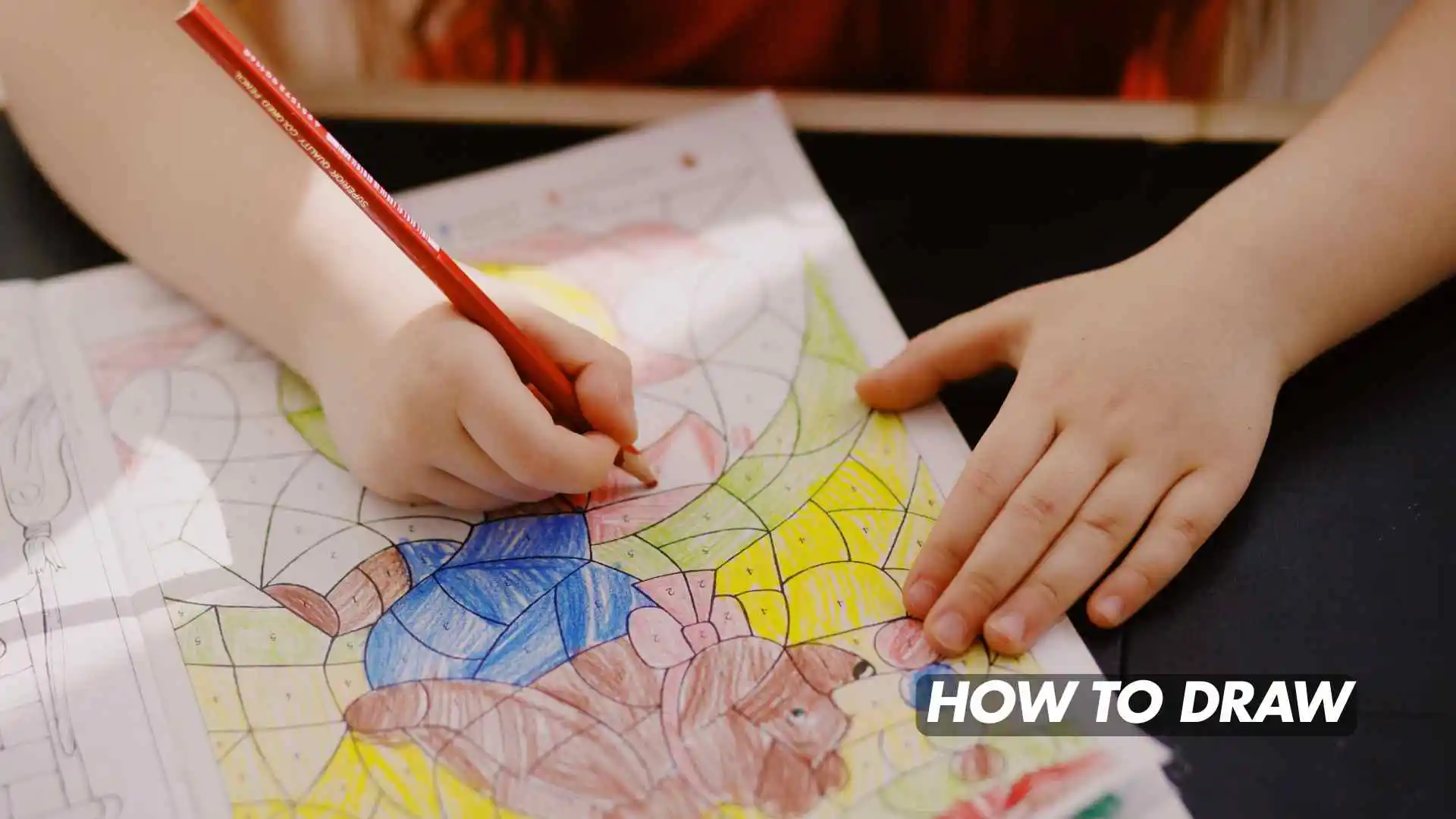Do you ever look at a beautiful drawing and think, “I wish I could draw like that!”? 🎨 You’re not alone. Millions of people want to learn how to draw, but they don’t know where to start. Whether you’re an absolute beginner or someone looking to improve your drawing skills, this guide will walk you through how to draw step by step — from the basics to more advanced techniques.
Drawing is not just about talent; it’s a skill you can learn and master with patience and practice. In this guide, you’ll discover easy drawing techniques, tools for beginners, step-by-step drawing tutorials, and realistic drawing tips to boost your creativity.
Let’s unlock your inner artist!
🎨 Why Learning How to Draw Matters
Learning how to draw isn’t just about creating art; it’s about expressing emotions, developing focus, and enhancing creativity. Drawing helps you:
- Relax and reduce stress 🧘
- Improve concentration and hand-eye coordination ✋👀
- Boost imagination and storytelling skills 🌟
- Express ideas visually 💭
- Learn to appreciate detail and proportion
So, if you’ve been searching for drawing for beginners or an easy drawing guide, this article is your perfect starting point!
✏️ Step 1: Gather Your Drawing Tools
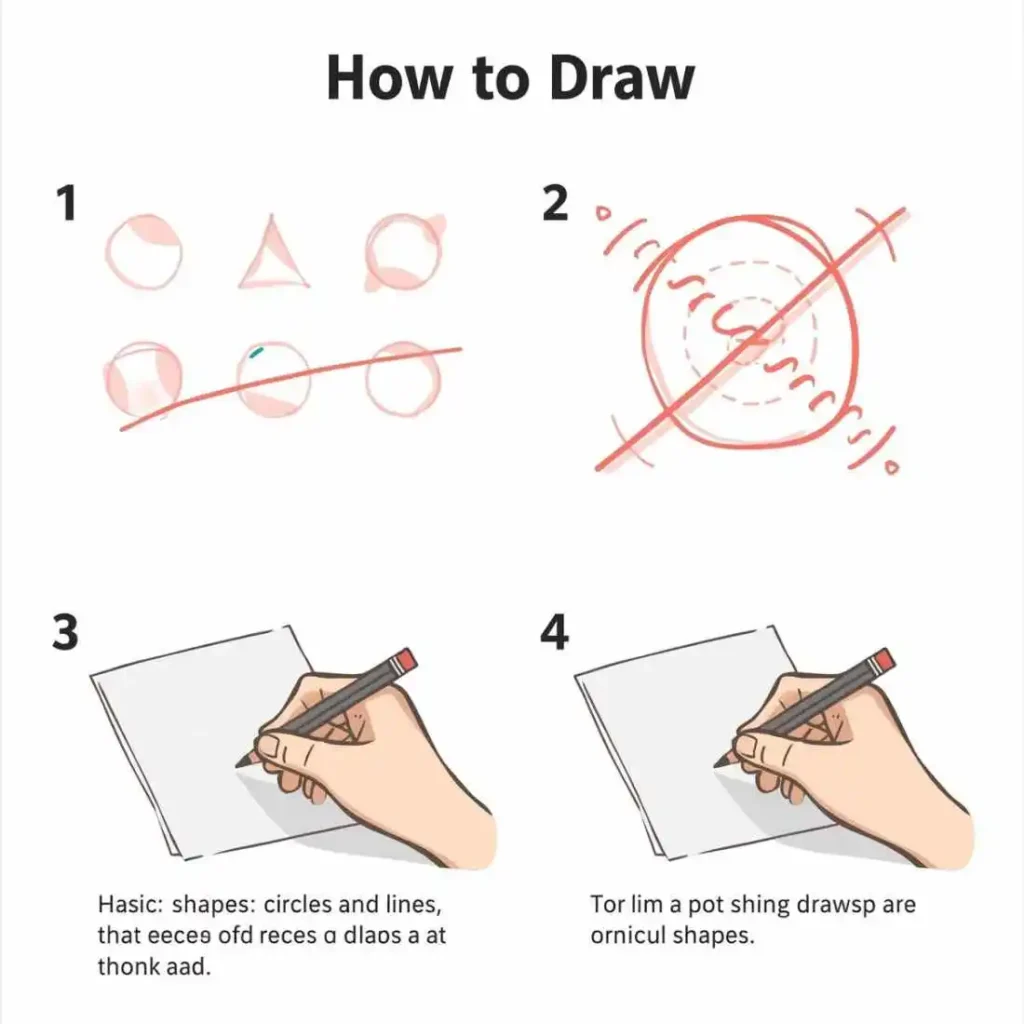
Before learning how to draw step by step, it’s important to have the right tools. You don’t need expensive art supplies—just the basics.
Essential Drawing Tools for Beginners:
- Pencils (HB, 2B, 4B, 6B) – Great for shading and sketching.
- Eraser – Use a kneaded eraser for gentle corrections.
- Sharpener – Keep your lines clean and precise.
- Drawing Paper – Smooth paper works best for detailed drawings.
- Blending Stump – Helps in smooth shading.
- Ruler – Perfect for drawing straight lines and proportions.
If you’re into digital art, use tools like Procreate, Adobe Fresco, or Sketchbook. Don’t worry—how to draw digitally follows the same principles as traditional sketching.
🪄 Step 2: Start with Basic Shapes
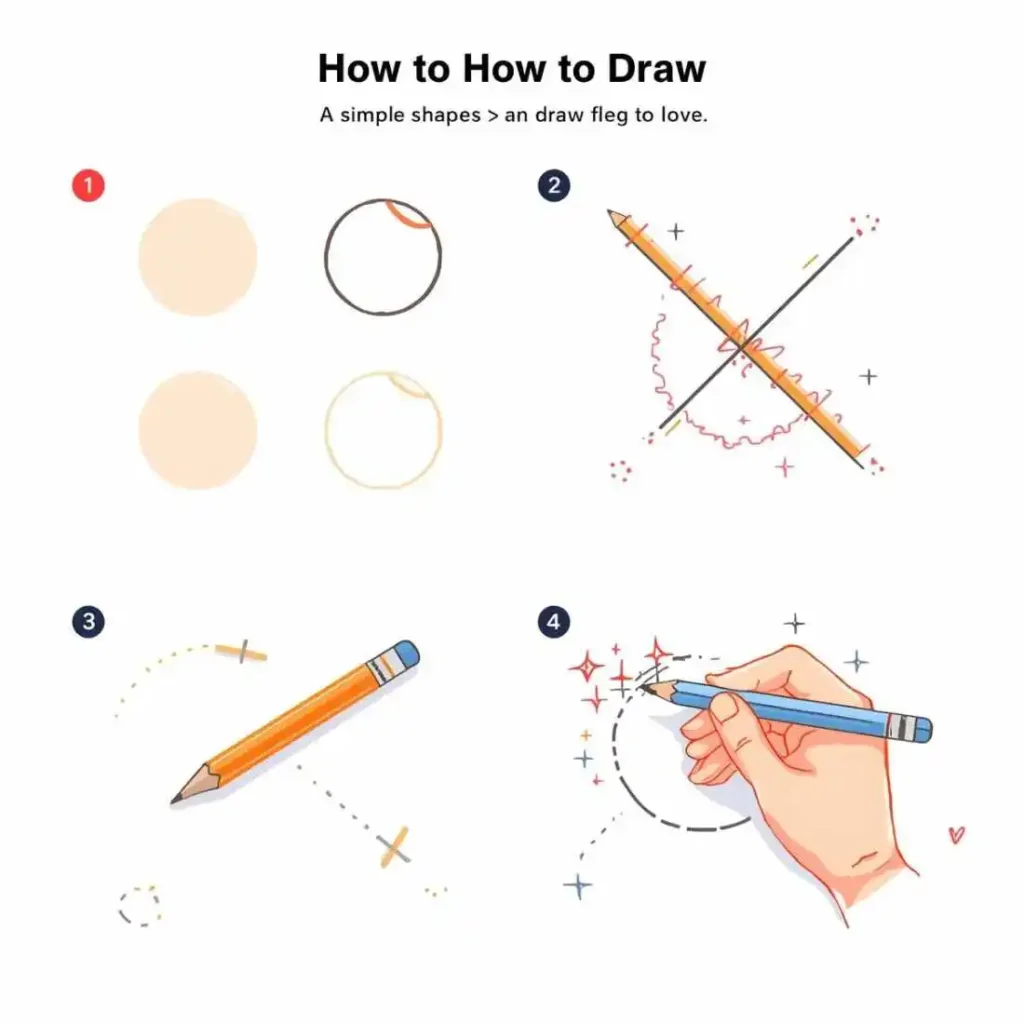
When you’re new to drawing, start simple. Every complex object you see is made of basic shapes — circles, squares, triangles, and rectangles.
For example:
- The human head begins as an oval.
- A house starts as a square and triangle.
- A flower begins with circles and curves.
This method is the foundation of step-by-step drawing tutorials. By mastering shapes, you’ll quickly learn how to draw easy things and eventually more detailed ones like faces, animals, or landscapes.
🧠 Step 3: Understand Lines and Proportions
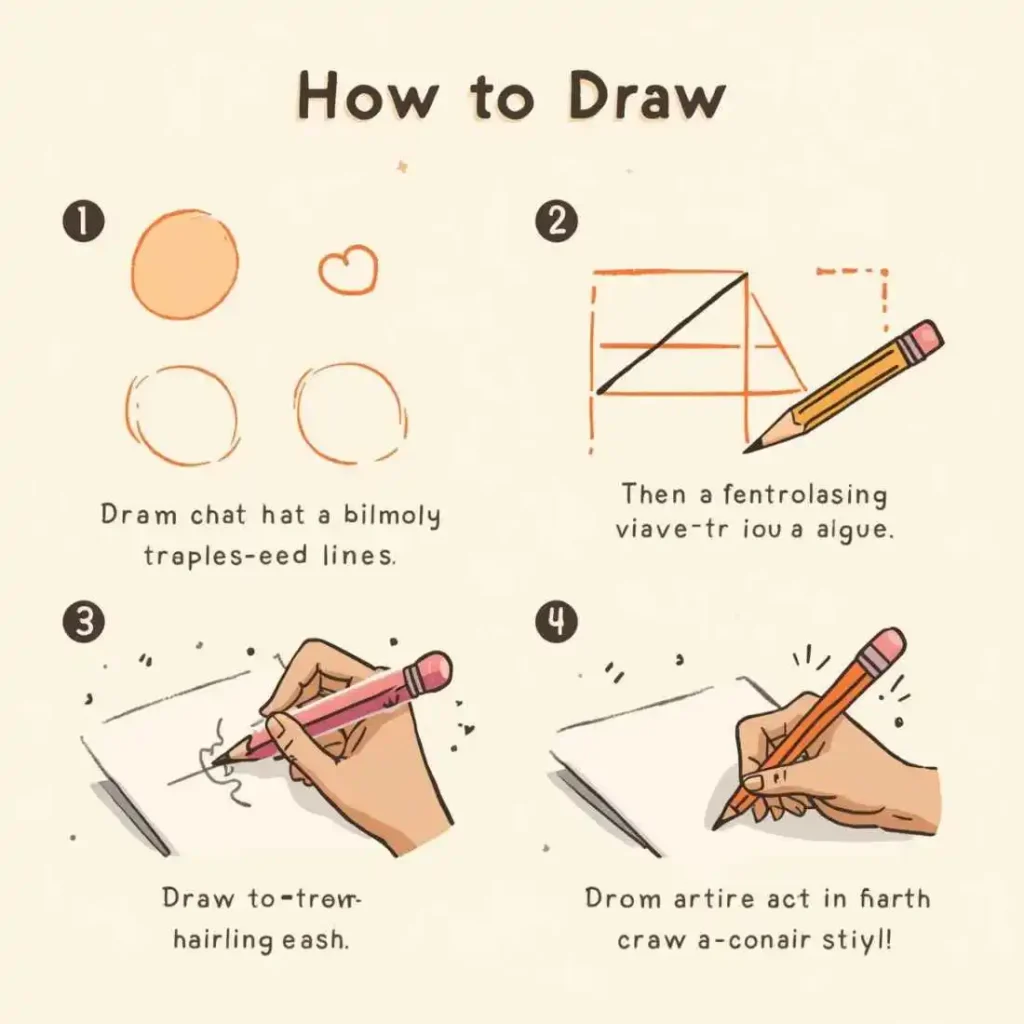
Drawing realistic art requires understanding lines and proportions.
- Lines: Practice curved, straight, zigzag, and wavy lines.
- Proportions: When drawing faces or bodies, proportions make your drawing look balanced and accurate.
Pro Tip: Use light pencil strokes first. You can darken lines once your proportions are correct.
🌸 Step 4: Learn Shading Techniques
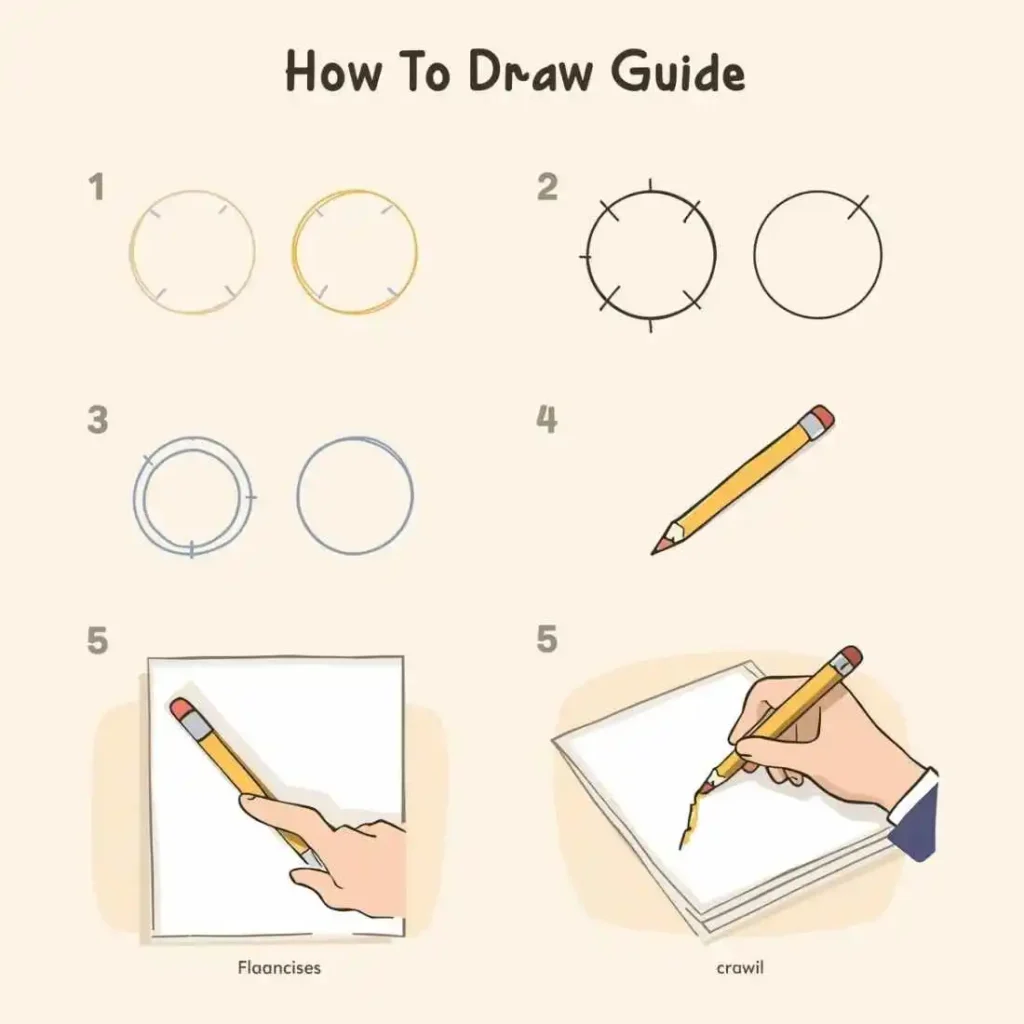
Shading is what brings your drawings to life! It adds depth, realism, and emotion to your artwork.
Common Shading Methods:
- Hatching: Parallel lines for light shading.
- Cross-Hatching: Overlapping lines for darker tones.
- Blending: Smooth transition using a blending stump or tissue.
- Stippling: Tiny dots for textured shading.
🐱 Step 5: How to Draw Animals Step-by-Step
Learning how to draw animals is fun and helps improve observation skills. Start with simple creatures like cats, dogs, or fish.
Steps to Draw a Cat:
- Draw a circle for the head.
- Add two triangles for ears.
- Sketch the body as an oval.
- Draw four legs using straight lines.
- Add eyes, whiskers, and a tail.
- Shade lightly for a realistic look.
This is a great exercise for anyone looking for easy sketches for beginners or how to draw step-by-step tutorials.
🌹 Step 6: How to Draw Flowers Easily
Drawing flowers helps you understand symmetry and natural flow.
Simple Flower Drawing Steps:
- Draw a small circle in the center.
- Add petals around it.
- Sketch the stem and leaves.
- Use shading techniques for a soft, realistic look.
Once you master how to draw flowers, you can experiment with roses, tulips, or even fantasy blooms.
👩🎨 Step 7: How to Draw Faces for Beginners
One of the most searched topics is how to draw faces — because it’s both challenging and rewarding!
Steps:
- Start with an oval for the head.
- Divide it into horizontal lines for eyes, nose, and mouth.
- Draw the eyes halfway down the face.
- Add a small nose and a curved mouth.
- Finish with hair and details.
🏞️ Step 8: Practice Drawing Objects Around You
Observation is key in art. Look around your room and draw what you see — a cup, chair, book, or phone.
This will help improve your beginner drawing techniques and boost confidence. Use daily drawing practice tips like setting a timer (15–30 minutes) for sketching something new each day.
💻 Step 9: Try Digital Drawing
Want to take your art online? Learn how to draw digitally!
Tools You Can Use:
- Procreate (iPad)
- Adobe Fresco (Windows/Mac)
- Krita (Free software)
Digital Drawing Tips:
- Use layers to separate sketch, color, and shading.
- Experiment with brushes.
- Adjust opacity for soft shadows.
Mastering digital drawing tips will make your art cleaner and more professional.
🧩 Step 10: How to Improve Your Drawing Skills
Improvement takes practice, but here are key ways to get better:
- Draw every day – even for 10 minutes.
- Study anatomy and perspective.
- Use references and tutorials.
- Experiment with light and shadow.
- Join drawing communities for feedback.
Remember, how to improve your drawing skills depends on consistency more than talent.
✍️ Common Mistakes Beginners Should Avoid
When learning how to draw, it’s easy to develop bad habits. Here’s what to avoid:
❌ Pressing too hard with your pencil.
❌ Skipping proportions and guidelines.
❌ Comparing your art to professionals.
❌ Ignoring basic shapes.
❌ Giving up too early.
🌈 Step 11: Explore Different Art Styles
Once you’re comfortable with the basics, explore new art styles:
🎭 Realism – Focus on detail and accuracy.
🧚 Cartooning – Fun and expressive.
🌸 Anime/Manga – Learn stylized faces and poses.
💀 Sketch Art – Minimalist yet powerful.
Experimentation keeps your drawing practice fun and helps you find your unique artistic voice.
🧘 Step 12: Use Reference Photos
Many beginners wonder if using references is “cheating.” It’s not! Using reference photos helps you understand shapes, light, and proportions better.
Try free platforms like:
- Unsplash
- Pixabay
This will improve your realistic drawing guide practice over time.
🌟 Step 13: Practice with Drawing Challenges
Keep your creativity alive with fun challenges!
Popular Drawing Challenges:
- Draw This in Your Style
- 30-Day Drawing Challenge
- Inktober (Draw with ink every day in October)
Challenges encourage consistency and make daily drawing practice enjoyable.
💬 Step 14: Join Drawing Communities
Join online art groups where you can share your sketches and get feedback. Platforms like:
- Reddit’s r/learnart
- DeviantArt
- Instagram art pages
These communities offer drawing tips for beginners and keep you motivated.
🕊️ Step 15: Keep Practicing and Believe in Progress
Every artist started as a beginner. Don’t be afraid of mistakes — they’re your greatest teachers. The more you practice, the better your sketching exercises for beginners become.
Remember, drawing is a journey, not a race. Keep your pencil moving! ✏️
✅ Conclusion
Learning how to draw is a lifelong adventure filled with creativity and growth. Whether you’re following a step-by-step drawing tutorial, exploring pencil drawing techniques, or discovering digital drawing tips, every sketch you make brings you closer to mastery.

